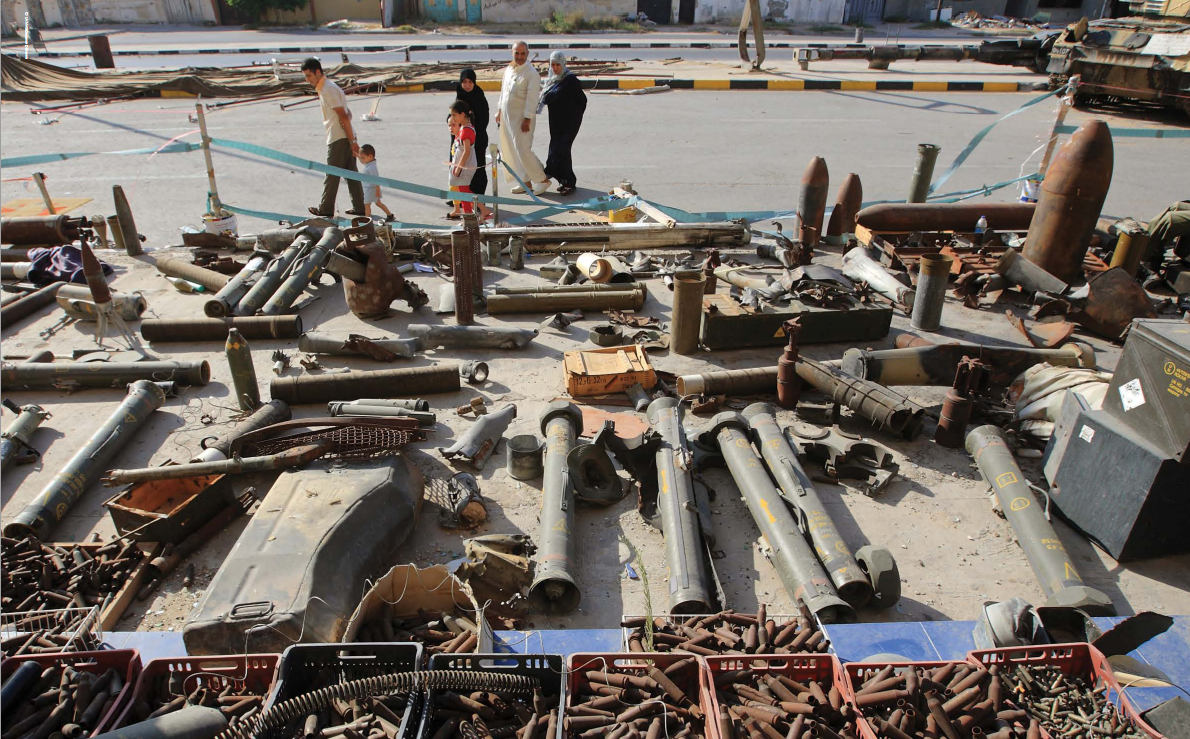The protection of civilians: New process offers hope
Cesar Jaramillo sits on the Steering Committee of the International Network on Explosive Weapons (INEW).
Published in The Ploughshares Monitor Volume 40 Issue 2 Summer 2019
Explosive weapons—aircraft bombs, heavy artillery, rockets, grenades, and improvised explosive devices—cause horrific damage. According to a report issued by UK-based group Action on Armed Violence (AOAV), there were 188,325 global deaths from explosive violence between January 2011 and December 2015.
EXPLOSIVE WEAPONS IN POPULATED AREAS
Today, armed conflict is more often being waged in urban areas. Urban warfare increases the likelihood of the use of explosive weapons in populated areas (EWIPA). Authoritative research has verified widespread use—by both state and non-state actors—in some of the most devastating contemporary conflicts. And a staggering proportion of casualties are civilians.
AOAV reported that civilian deaths and injuries in populated areas represented 91 per cent of all casualties from explosive weapons in 2018. “The majority of those reported harmed by explosive violence worldwide are still civilians and will continue to be so unless dramatic international efforts take place.”
But the reverberating effects of EWIPA go far beyond those immediately killed and injured.
Extensive damage to critical civilian infrastructure and essential services—including those related to health care, sanitation, and electricity—causes long-term harm and suffering, which are often underreported. EWIPA use also causes psychological trauma, hampers the work of humanitarian relief agencies, and drives forced displacement.
INTERNATIONAL RESPONSE
The good news: EWIPA use is garnering increasing diplomatic attention.
Twenty years ago, the United Nations Security Council (UNSC) made protection of civilians a distinct agenda item. During the UNSC debate on the Protection of Civilians this past May, the Government of Austria announced that it will host a multilateral conference on the protection of civilians from explosive weapons in urban contexts.
Austria’s announcement follows a years-long effort by various stakeholders that have been calling for concrete multilateral action to reduce the human suffering caused by EWIPA. At the core of this effort has been a close partnership of progressive states, including Austria, Mexico, Mozambique, Chile, and New Zealand.
Also involved are civil society actors, notably the International Network on Explosive Weapons (INEW). This global coalition of nongovernmental organizations advocates for the development of an international political instrument that commits states to not using EWIPA and includes provisions for victim assistance.
INEW has laid some of the groundwork for the October meeting in Austria. A regional meeting in Maputo, Mozambique in 2016 brought together 19 African states. Another in Santiago, Chile in 2017 gathered 23 states from Latin America and the Caribbean. In outcome documents, each group committed to supporting the negotiation of a political declaration (a type of multilateral policy instrument) on EWIPA.
THE ROAD AHEAD
With luck and hard work, such a political declaration could be adopted as early as 2020. The goal is for a document that strengthens, clarifies, and goes beyond existing international law—including human-rights law and international humanitarian law—in the use of EWIPA. The expectation is that the spirit and specific commitments of a clear multilateral norm proscribing the use of EWIPA will gradually be reflected in national domestic policies, including military doctrine and rules of engagement.
Until then, UN Secretary-General António Guterres has called on states to avoid the use of explosive weapons in populated areas. This message is not new (see the 2017 “Report of the Secretary-General on the Protection of Civilians in Armed Conflict” and the 2018 “Secretary-General’s Agenda for Disarmament”).
Will there be challenges going forward? No doubt. Arms control and disarmament processes, which directly tackle the conduct of armed conflict, are sensitive issues in political and military circles. There could be strong pushback, especially if the process is perceived to limit options on the battlefield.
EWIPA A GLOBAL PROBLEM
EWIPA is not a concern only for major military powers whose military is (or could be) involved in armed conflict. Not only the problem of Syria, Iraq, Yemen, Iraq, Afghanistan, and other states suffering from EWIPA use.
EWIPA is a problem of global concern. It has a prominent place on the multilateral humanitarian disarmament agenda—an agenda that has muscle. A humanitarian imperative served as the key catalyst for the diplomatic processes that resulted in the Arms Trade Treaty in 2014 and the Treaty on the Prohibition of Nuclear Weapons in 2017.
As these processes demonstrated, states do not need to possess nuclear weapons to have a say on nuclear disarmament, or to export or import a lot of weapons to change the regulatory regime for the global arms trade.
A state at peace today could be at war tomorrow, and subject to the dire consequences of EWIPA. It is in everyone’s interest to develop clear standards and specific commitments to address the pattern of harm caused by EWIPA.
The October Vienna conference may be the path to achieving this worthy and long-overdue objective.
Project Ploughshares was closely involved in supporting and promoting both the ATT and the Nuclear Ban Treaty. In October, Project Ploughshares will be in Vienna supporting efforts to better protect civilians in armed conflict.
Photo: People collected ammunition remnants from Misrata city, and made an open air museum in Tripoli Street, Misrata. UN Photo

